The NVIDIA GeForce GTX 1080 Ti Founder's Edition Review: Bigger Pascal for Better Performance
by Ryan Smith on March 9, 2017 9:00 AM ESTMeet the GeForce GTX 1080 Ti Founder’s Edition
When it comes to the design of the GeForce GTX 1080 Ti Founder’s Edition, if you’ve seen a high-end NVIDIA card in the last 4 years then you know roughly what to expect. NVIDIA has found their sweet spot in card design, and while the GTX 1080 Ti does have a few wrinkles of its own, it’s not a radical departure from the likes of the GTX 1080, GTX 980 Ti, or GTX 780 Ti. GeForce GTX 1080 Ti is a traditional NVIDIA reference card, with all the competence, performance, and functionality that entails.
At a high level, the GTX 1080 Ti Founder’s Edition is a 10.5-inch long blower-type card comprised of a cast aluminum housing and held together using a combination of rivets and screws. Designed as much for aesthetics as functionality, NVIDIA’s use of well-secured metal has done a good job of tempering noise generation, and for those who like to show off their rigs, the basic design and LED-backlit logo are unmistakable.
Cracking open the card and removing the shroud exposes the card’s fan and heatsink assembly. Once again NVIDIA is lining the entire card with an aluminum baseplate, which provides heatsinking capabilities for the VRMs and other discrete components below it, along with providing additional protection for the board. Like past NVIDIA 250W cards, the GTX 1080 FE uses NVIDIA’s vapor chamber cooler in order to maximize the heat transfer between the GPU/VRMs/DRAM and the aluminum heatsink above. As far as blower-type cards go, it’s still the card to beat.
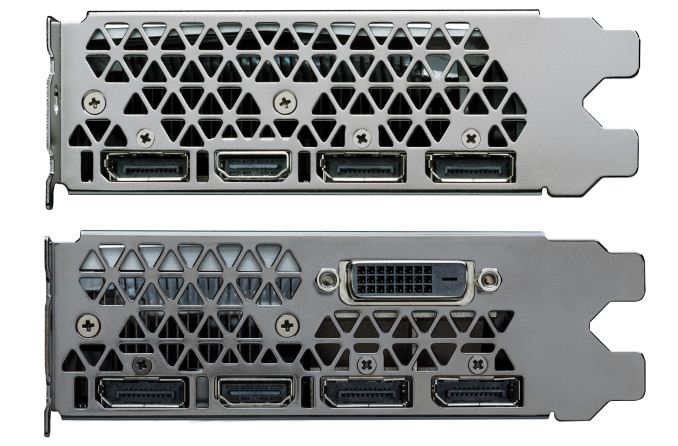
Airflow: GTX 1080 Ti vs. GTX 1080
For the GTX 1080 Ti, NVIDIA has refined this basic design just a bit in order to further increase airflow. The key change here is that NVIDIA has removed the DVI port that in past designs took up part of the second slot used for ventilation. Consequently the entire slot is now open for airflow. As we’ll see in our benchmarks the practical difference in noise is not very much, but it still means the GTX 1080 Ti is quieter than the GTX 980 Ti and GTX 780 Ti that came before it.
Otherwise in a blink-and-you’ll-miss-it kind of change, NVIDIA has also tweaked the tapering of the shroud itself to maximize the airflow. It’s difficult to pick up in pictures, but the shroud is just a bit thinner and the bottom of the shroud is just a bit higher, allowing just a bit more unobstructed airflow through the card. This subtle change is a good example of where NVIDIA is in their card design cycle: with the major performance elements of the cooler design essentially being a solved problem, NVIDIA is now toying with small changes to eke out just a bit more performance.
Popping off the cooler, we see NVIDIA’s reference PCB. This appears to be the same PCB used on the similarly configured GP102-based Titan X Pascal, and is consistent with NVIDIA’s past reuse of PCBs.
Of particular note, we can see that NVIDIA has equipped the card with a surprising number of MOSFETs, and it turns out there’s a good reason for this. For the GTX 1080 Ti, NVIDIA has opted to go with two dualFETs for each of the GPU’s 7 power phases, as opposed to the traditional 1-per-phase design used in most NVIDIA cards. While this drives up the total cost of the card a bit, the payoff is that it improves on the card’s power delivery efficiency a bit, especially at the 200W+ range the GTX 1080 Ti operates in.
This isn’t the first overall GeForce card we’ve seen with a large number of MOSFETs – NVIDIA’s board partners at times treat it as a contest in and of itself – but this is the first time we’ve seen NVIDIA use such a large number and promote it. Generally speaking additional phases and MOSFETs can improve a power delivery subsystem by spreading out the load – and in a game of inches, every bit counts – but the additional MOSFETs are subject to diminishing returns both at idle and load.
Otherwise this is a fairly typical NVIDIA PCB. The reuse of the Titan PCB means that the board should work with water blocks and other add-ons designed for the Titan, though I suspect for best overclocking results the hardcore overclockers will continue to want to look to more specialized designs from the likes of MSI, EVGA, Asus, and others.
Flipping the card over to the back, we find NVIDIA’s now-standard segmented backplate. The presence of the backplate helps to protect the card, but one or both segments can be removed to add precious millimeters of room for airflow in tightly packed SLI designs.
Moving on, towards the top of the card we find the requisite SLI and power connectors. Like NVIDIA’s 250W cards before it, the GTX 1080 Ti features a 6 pin + 8 pin setup. NVIDIA’s 250W limit means that, on-board circuitry aside, the power delivery system isn’t anywhere close to its 300W limit. Otherwise we find a pair of SLI connectors, which like the rest of the GTX 10-series cards are designed for use with NVIDIA’s latest-generation High Bandwidth (HB) bridges.
Finally, getting back to NVIDIA’s display I/O configuration, as we mentioned earlier NVIDIA has removed the DVI port from the card in favor of giving the card unobstructed airflow for better cooling. As a result, the card features only modern ports: 3x DisplayPort 1.4 and 1x HDMI 2.0b. With that said, as a consolation item of sorts for the remaining DVI users, NVIDIA is including a DisplayPort-to-SL-DVI adapter with the Founder’s Edition card. This doesn’t perfectly replace the missing DVI port – in particular, it can’t drive 2560x1440 or 2560x1600 displays – but for lower resolution displays it will do the trick. But if it’s not already clear from this change and the number of motherboards to drop DVI over the years, DVI’s days are numbered, and we’re only going to continue to see DVI ports go away at this point.


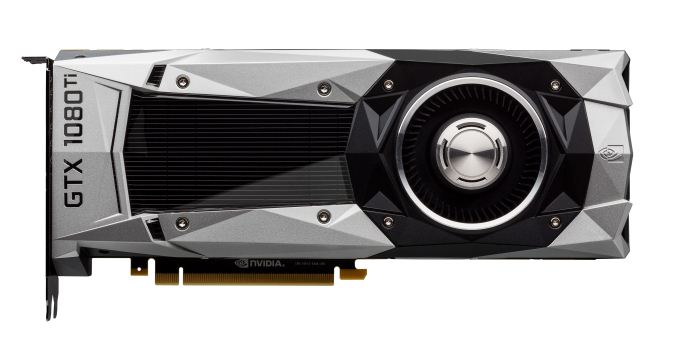
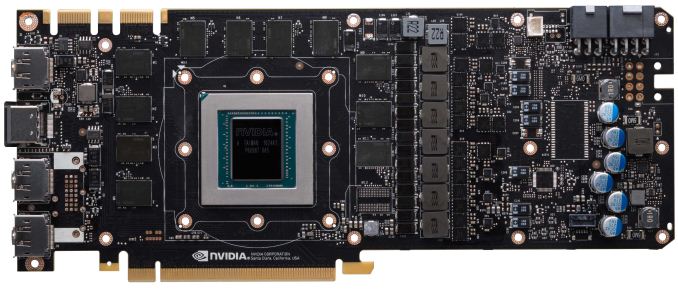
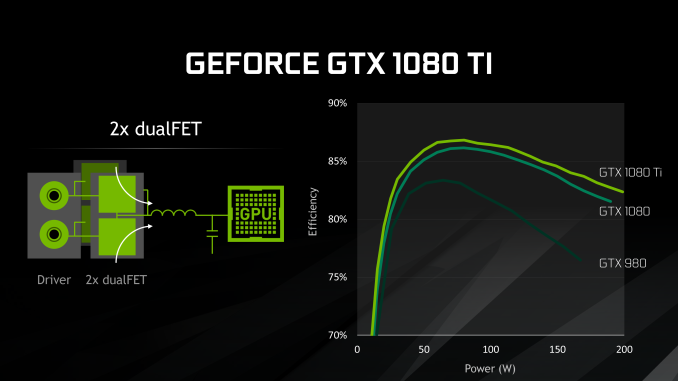
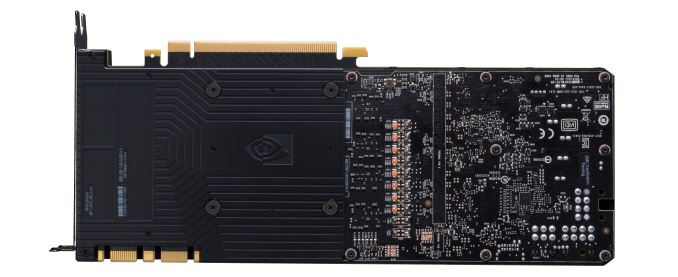
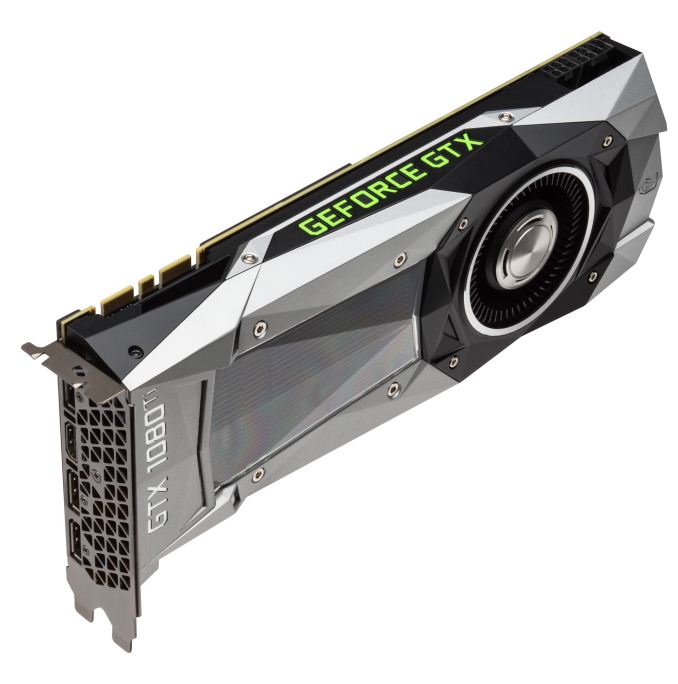








161 Comments
View All Comments
ddriver - Friday, March 10, 2017 - link
Yeah, also amd was free to offer discounts to those who didn't sell intel products. They helped make two games, and gave Larry who only sells amd systems a free amd t-shirt as a reward. Because that's what amd can afford, after years of being sandbagged by intel and Hecktor made it buy ati for 3 times what it was worth so it can go bankrupt so it will be forced to sell its fabs to Hecktor's arab boyfriends.eddman - Friday, March 10, 2017 - link
You did not answer the question.Being known in the industry for many years, yet nothing has happened.
ddriver - Friday, March 10, 2017 - link
What nvidia does is the same thing as lobying. It is legalized bribe. You cannot give a briefcase of money to a politician and tell him to do what you want him to. But you can spend a briefcase of money to make a politician do what you want him to do. And it is not illegal, politicians have legalized it, and as far as they and the lobbyists are concerned, that is a good thing, a political contribution.The same kind of advantage that allows nvidia to do that is what would give them the upper hand in court. It could be proven to be a crime, if only amd had enough money to out-sue nvidia. Which they don't. And if they did, they'd be able to support game developers, so it wouldn't even come to that. nvidia is friends with the big boys, amd is a perpetual underdog. In such scenarios, even if a lawsuit was to take place, it would be mostly a show for the public, and if found guilty, the punishment would be a symbolic and gentle slap on the wrist.
Now, with your question answered, do you feel better?
ddriver - Friday, March 10, 2017 - link
There is high likelihood that we will see such a case against nvidia, but not until they have completely cemented their dominance position, and that case would only serve to wipe nvidia clean, so they can enjoy their dominance without being haunted by their past of sleazy illegal practices, giving them a clean slate at a very desirable price.eddman - Friday, March 10, 2017 - link
So it is not illegal to help devs doing optimizations?ddriver - Friday, March 10, 2017 - link
It can be as legal or illegal as killing people. What nvidia does is most certainly unfair business practices and abuse of its position.The legal system is rarely about what is right or wrong. What nvidia does is certainly wrong. If they can get away with it, it is legal. If someone kills your entire family and then walks free because the legal system found him to be innocent, would you be as OK and defending his innocence as you are doing for nvidia?
eddman - Friday, March 10, 2017 - link
That comparison isn't even remotely relevant.Companies work with devs in the entire computing industry all the time to make sure software works best with hardware. It has never been illegal.
ddriver - Friday, March 10, 2017 - link
Are you by a chance on the spectrum? There is nothing wrong with helping to optimize software. For the last time - what is wrong is offering that help on implied exclusive terms. I don't know people who have been offered support by amd in exchange of sandbagging nvidia. But I know people who eventually optimized for amd and as a result lost the support nvidia offered prior to that. And the revenge didn't end there either, subsequent driver releases significantly worsened the performance of the already nvidia optimized code.nvidia doesn't help out of the kindness of their hearts or awesomeness, they do not even help to make the best out of their hardware, they only help if that would get them an unfair advantage, so it is implied that their help is only available to those who leave the amd rendering pipeline deliberately unoptimized.
eddman - Saturday, March 11, 2017 - link
...and some other people tell otherwise. Who to believe. Can you provide anything solid to back that up?"subsequent driver releases significantly worsened the performance of the already nvidia optimized code"
Which games? Which drivers? This one can be tested.
Why would nvidia reduce the performance of a game on their own cards, which is going to hurt them? The whole purpose of this was to make the game work best and sell cards based on that.
eddman - Saturday, March 11, 2017 - link
What about you? Are you on the spectrum?